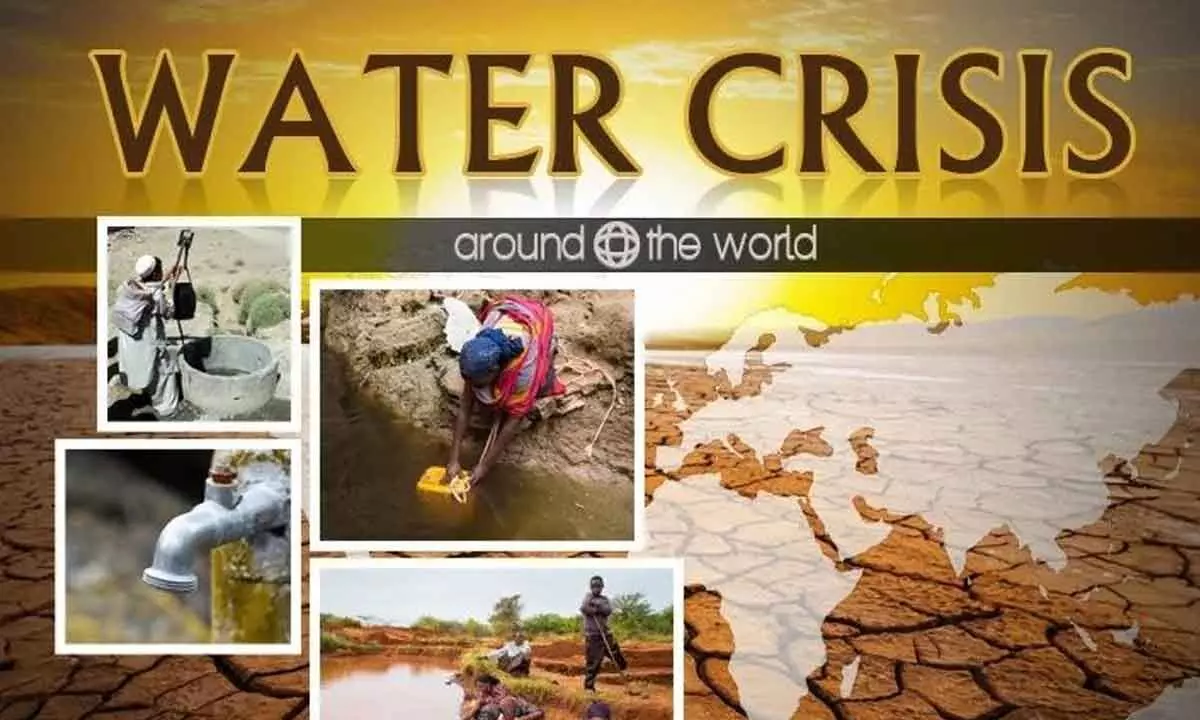There is a growing need for a water rich world
By 2030, 700 million people could be displaced because of intense water scarcity
image for illustrative purpose

There have been some successful water conservation initiatives in India that can serve as models for future efforts. For example, Rajasthan has implemented a rainwater harvesting program that has led to a significant increase in groundwater levels. Bengaluru has implemented a program to recycle wastewater for industrial use, thereby reducing the demand for freshwater
The world is facing an escalating water crisis, fuelled by population growth, increased demand, and global warming. This signifies mounting social, financial and environmental risks for emerging economies. The bottom line is that by improving water governance, countries can reduce poverty levels and become more resilient.
According to the World Bank, it is becoming increasingly difficult to achieve Sustainable Development Goals (SDG) to end poverty, partly due to more frequent water-related disasters such as floods and droughts.
To make matters worse, droughts and other extreme weather events have doubled in the last 25 years, and the World Health Organization (WHO) warns that this will have severe consequences for nutrition and health.
A growing body of research shows the importance of water for development and human well-being. When people have access to clean water and safe sanitation, their health improves to significant levels. Ensuring access to clean water at home and sanitation in public places is especially important for girls and women, as they brighten their prospects of receiving education or maintaining a job.
Nearly four billion people are currently experiencing severe water scarcity for at least one month each year, and the number is estimated to reach five billion in the next three decades. By 2030, 700 million people could be displaced because of intense water scarcity.
Water demand is rapidly growing and is likely to increase by 20-30 per cent before 2050. Population growth, economic development and new consumption patterns are the main drivers.
Global warming is aggravating the situation with longer dry-spells and a growing number of droughts.
According to the World Meteorological Organization, droughts have increased by 29 per cent in the last two decades while flood-related disasters increased by 134 per cent.
Countries can strengthen their resilience by investing more in climate adaptation that can help manage water-related climate risks better.
There are many water-related solutions that help countries both mitigate and adapt to climate change. A growing number of countries are integrating water into their climate action plans under the Paris Agreement on climate change.
Water pollution has worsened in many rivers in Latin America, Africa and Asia since the 1990s. More than half of all wastewater is discharged into nature without any treatment.
The World Bank has demonstrated how water pollution is a great threat to both human lives and economic prosperity and warns that we are at risk of producing 70 per cent more waste by 2050.
The main cause of water pollution in many low-income countries is fecal contamination, as there is a serious lack of safely managed toilets.
Healthy freshwater ecosystems are vital for life on Earth, yet they tend to be the hardest hit by biodiversity loss.
Ecosystems providing freshwater are under increasing pressure from a growing population, human activities, and climate change.
SDG calls for the world to increase the number of water bodies of good water quality, implement integrated water resources management and protect freshwater ecosystems but the world is not on track.
To address these challenges, we need to improve how we use and manage water so that both humans and nature receive equal shares. Water governance must be efficient and transparent. It should also be inclusive, with both women and men involved in the decision-making process. Currently, despite being more caring and dexterous, women have limited opportunities to influence decision-making.
As the global population looks set to reach 10 billion by 2050, pressure on the world’s freshwater will only continue to grow. How we value and manage water is one of our most decisive questions.
India is one of the most water-stressed countries in the world, with its water resources facing increasing pressure from a growing population, urbanisation and climate change. Implementing water conservation strategies is essential to ensure a sustainable future for the country. However, there are both challenges and opportunities that need to be addressed.
There have been some successful water conservation initiatives in India that can serve as models for future efforts.
For example, Rajasthan has implemented a rainwater harvesting program that has led to a significant increase in groundwater levels. Bengaluru has implemented a program to recycle wastewater for industrial use, thereby reducing the demand for freshwater.
While there are many challenges that need to be addressed on a priority basis, there are also opportunities for water conservation and successful initiatives that can serve as models for future efforts.
Collaboration between government, civil society, and the private sector will be crucial to address the challenges and taking advantage of the opportunities for water conservation in India.

